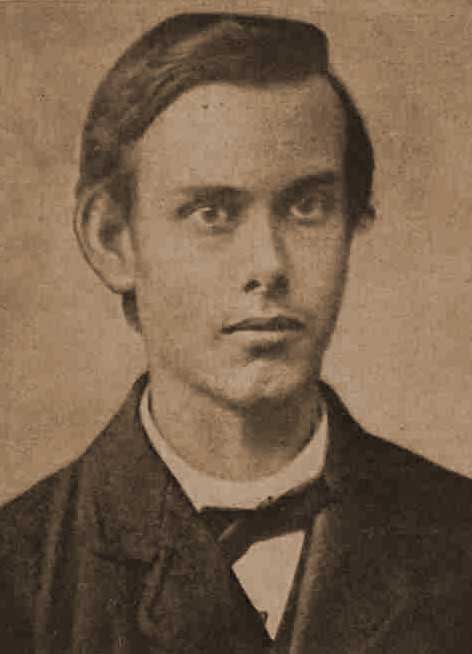
FRANCIS THOMPSON - ENGLISH POET.
The poet Francis Thompson (1859 - 1907) achieved recognition for his work from poetic and intellectual peers during his lifetime and after, although long-lasting fame arguably eluded him. His work does not have the enduring quality which makes the likes of Shelley or Tennyson household names, for instance. Nevertheless, he left behind an important body of work including his most famous poem The Hound Of Heaven, which portrays a remorseless God pursuing a sinner.
In Black Hearts And Blue Devils, I have Thompson visiting the Black Country, where he makes an enemy of sergeant Abraham Lively. He arrives at Old Hill train station and finds a room at the nearby canalside Navigation Inn (unlike Thompson's totally fictional visit, the "Inn” - like all of the drinking establishments in Black Hearts - actually exists or existed, until late into the last century in the case of the Navigation). And it is The Navigation which provides the idea for one plot strand: in times gone by, legend has it, the management had on display a certain top-hat which was said to have belonged to "Jack The Ripper". How anyone in a small town a hundred miles from London made the connection between that hat and one of history's most infamous unidentified criminals is open to wild conjecture of course. Perhaps he had stencilled his "nom de crime" inside in case of loss?
Anyway, it is no mere coincidence that, in Black Hearts, Thompson stays at the Navigation. Because, in 1988, the centenary of the ripper killings, Thompson was added (however implausibly you may believe that to be) to the growing list of "ripper suspects". You have this possibility to contend with when reading the book. As I portray, Thompson really was a morphine user, a habit which led to addiction and which, it is argued, is not exactly conducive to sane thinking. In his book, "Francis Thompson - Ripper Suspect", Richard Patterson argues that not only did Thompson, before the murders, write about killing prostitutes with a knife and, after the murders, write about killing women with a knife, but that he also had the means and opportunity. Patterson's research suggests that Thompson was living in Whitechapel at the time of the murders and within walking distance of them; also that, homeless (and thus virtually "invisible") he carried a scalpel in his coat pocket; he had trained as a surgeon for several years. Intriguingly, in February 1887 he submitted a poem (Night-Mare Of The Witch Babies") to a magazine in which the protagonist, a "lusty knight" stalks and then kills a prostitute, cutting out her uterus to discover a pair of twins (fruits of sin no doubt). If you are interested in the ripper case, I would recommend that you follow up on what Patterson and others have to say, and make up your mind about Thompson's guilt or innocence.
As for the parallel character in Black Hearts And Blue Devils, is he as black as some have painted the real Thompson? Well, that would be telling!
(PIC. attached is of FT looking how I envisage him as the Black Hearts And Blue Devils character.)
Post Views : 410